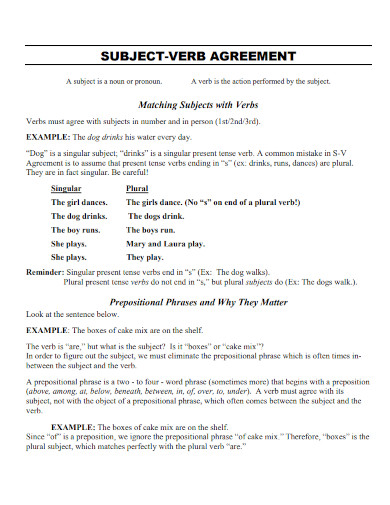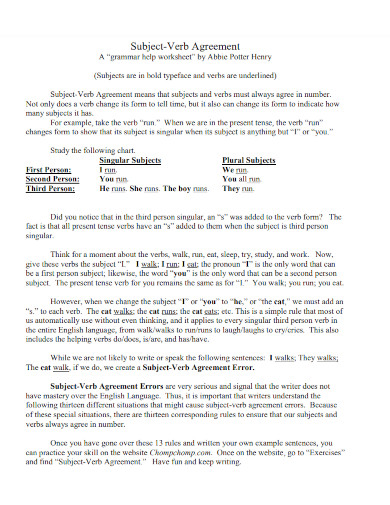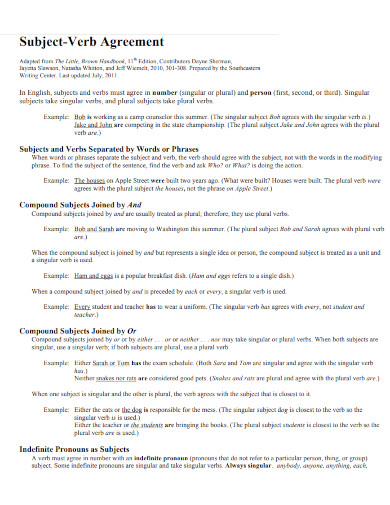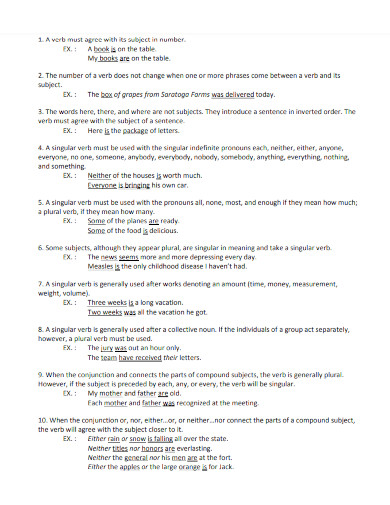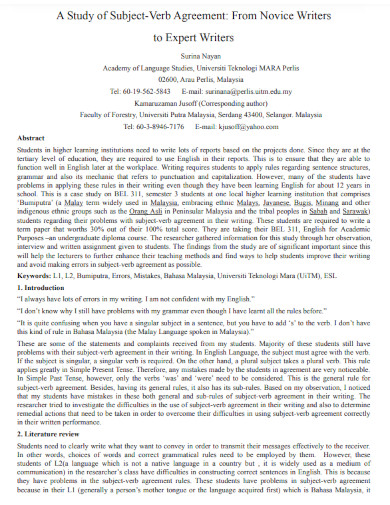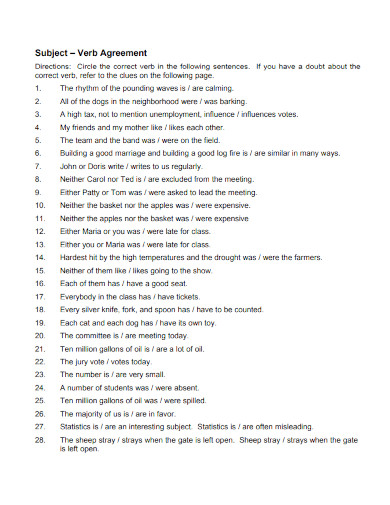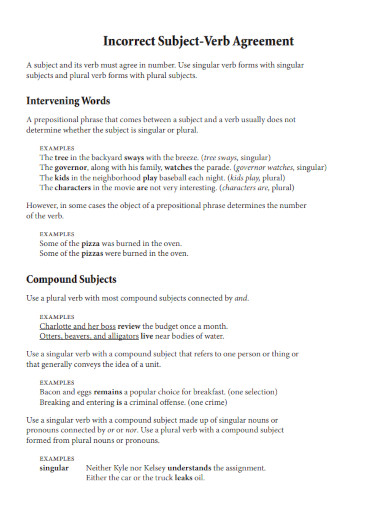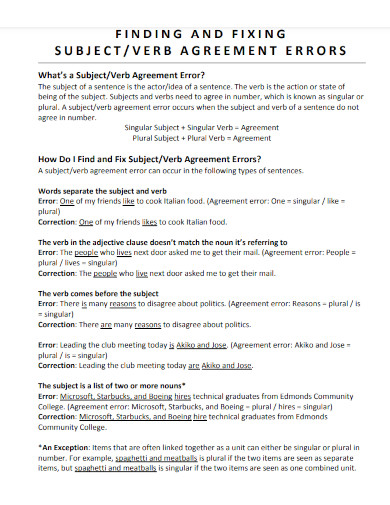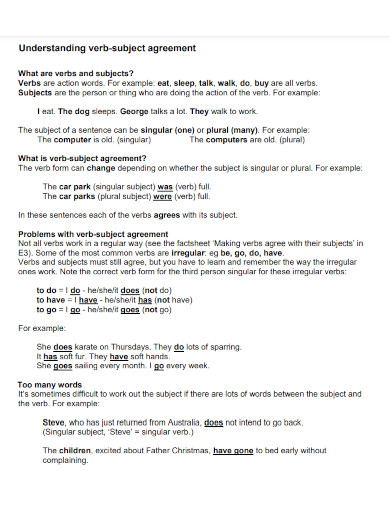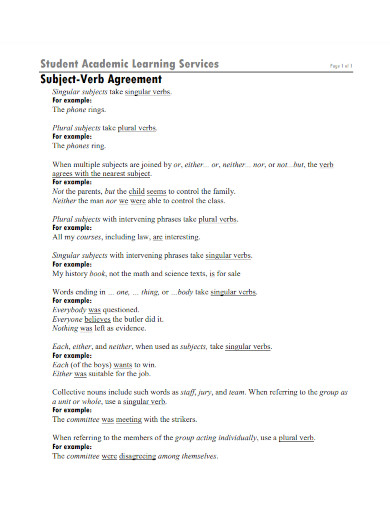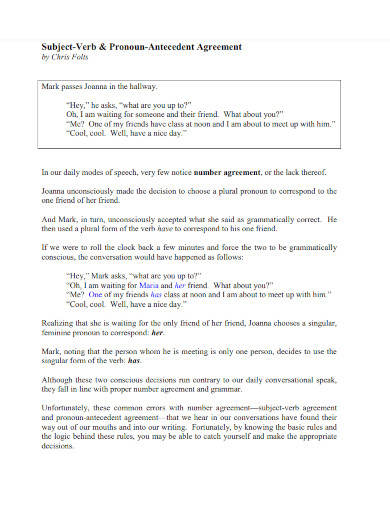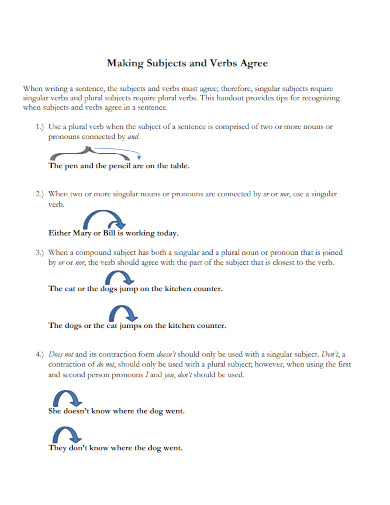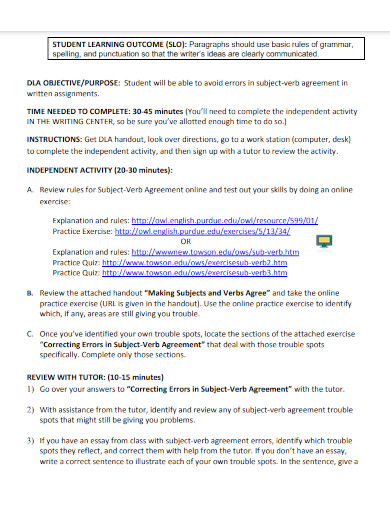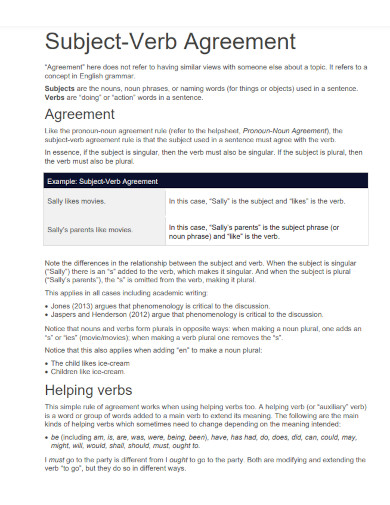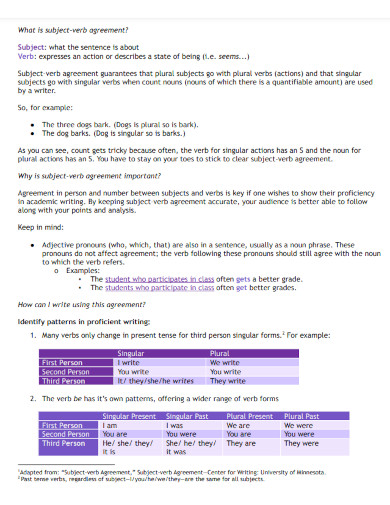14+ Subject Verb Agreement Examples
There are many different sentence structures that people will use in their everyday conversations and writings. One of the most important sentence structures a person should understand is subject-verb agreement.
1. Subject Verb Agreement Template
2. 13 Rules of Subject Verb Agreement
3. Subject-Verb Agreement Example
4. Microsoft Word Rules for Subject Verb Agreement
5. Study of Subject-Verb Agreement
6. Subject-Verb Agreement Worksheet
7. Incorrect Subject-Verb Agreement
8. Fixing Subject-Verb Agreement Errors
9. Understanding Verb Subject Agreement
10. Student Academic Learning Services Subject-Verb Agreement
11. Subject-Verb & Pronoun-Antecedent Agreement
12. Making Subjects and Verbs Agreement
13. Subject Verb Agreement Course
14. Subject-Verb Agreement Study Skills
15. Accessible Kenyon Subject Verb Agreement
What Is the Subject-Verb Agreement
The subject-verb agreement is a basic sentence and grammatical structure that enforces the person to use the correct verb that agrees with the subject of the sentence or statement. This structure ensures that the sentence is clear and concise, which will leave little room for misunderstandings and misinterpretations.
How to Determine the Verb’s Form Based on the Subject
The subject and verb must agree if the writer or speaker wants to use a grammatically correct statement or sentence. If you need an example or a worksheet to help you further understand and practice one’s subject-verb agreement skills, then you may use any of the links above.
Step 1: Outline and Segment the Sentence
Begin by outlining and segmenting the sentence into various parts. This will help you easily dissect and identify the subject and the verb of the sentence, which is more effective the more complex the sentence structure will be.
Step 2: Identify the Subject/s of the Sentence
You will need to identify the subject/s of the sentence. This is very important as the form of the verb relies on the placement and format of the subject.
Step 3: Determine the Format of the Subjects Concerning the Verb
There are multiple ways a person can write the subject of a sentence or statement. Determine the format of the subject, the existence of the words “and” and “or”, the placement of the noun/s, and the overall context of the subject.
Step 4: Determine the Form of the Verb to Agree with the Subject
After you have isolated and determined the format of the subject, you must now determine what form the verb will take. If the subject is a plural noun, one must use the plural verb form, and vice versa.
FAQs
What are some of the rules of subject-verb agreement?
The main rule of the subject-verb agreement states that a singular common noun or proper noun will have a singular verb, while a plural common noun or proper noun will have a plural verb. There are further iterations and exemptions of the main rule that will expound on various situations. When there are multiple subjects in a statement and is connected by the word “and” then the verb should be plural, but if the word “And” connects two subjects that refer to a single thing the verb is singular. For example, in the sentence “Alexa and Macoto love eating ice cream,” the verb is singular as there are two nouns that refer to different subjects. Another rule concerns the usage of the word “or” in the sentence; if two singular subjects are connected by the word “or” the verb should be singular, but if one of the subjects is plural then the noun closest to the verb will dictate its form. There are plenty of rules that will augment the main rule of subject-verb agreement and will help ensure the person’s ability to abide by the subject-verb agreement.
What are the five forms of verbs?
All verbs have five different forms wholly based on the context that the person will use the verb in. The first and most basic form of the verb is the simple present tense, which denotes that the verb is currently happening. The next form of the verb is the simple present participle, which is usually denoted by the -ing suffix. This form of the verb indicates the ongoing action of the verb that will span a specific time during the present. The third form of the verb is called the past tense, which is often denoted by a change in spelling or the -ed suffix. This form and the past participle refer to an action done in the past or a specific timeframe in the past. The fifth form of a verb is called an infinitive verb, which has the word “to” preceding the verb.
What is the importance of subject-verb agreement?
When writing a paper, remember that verbs must always agree with the subject in both quantity and perspective. Subjects and verbs must constantly agree with one another. The link between subjects and verbs is important to write in grammatically correct English. Subject-verb agreement unifies a statement and improves comprehension. This form of agreement ensures that your document is precise, clear, and aesthetically right.
The subject-verb agreement is a sentence structure that ensures the person determines the right form of the verb about the subject of the sentence or statement. When used properly, one’s sentence and statement will be full of clarity, which will leave little room for misinterpretation and misunderstanding. Therefore the person needs to know and understand subject-verb agreement.



